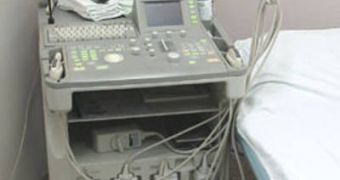Living in some of the most secluded places in the world, such as Australia's Antarctic bases, can be a very challenging task, especially if you take into account the fact that most of these facilities remain isolated from the rest of the world for more than nine months per year. If a disease besets the scientists working at these research centers, they have to take care of it in the compound, and cannot expect assistance from the outside world. Now, healthcare officials are planning on instructing the medical staff at these facilities on the use of modern technologies, such as the new 3D diagnostic ultrasound.
During the isolation period, doctors at research facilities in the remote regions of Antarctica are left to fend for themselves, and are sometimes confronted with a number of severe illnesses, which they have to accurately diagnose in order to offer the appropriate course of treatment. But, when confronted with complex diseases, they often lack the appropriate equipment to do so, or do not have sufficient expertise to deal with the situations that may occur on-site.
That's why Australia's Antarctic Division and the Royal Perth Hospital in Western Australia are currently engaged in an effort to create a comprehensive set of guidelines that would allow even the most unprepared doctor – with a minimal training – to make use of modern technologies and be able to assess someone's condition with far greater accuracy than ever before. Royal Perth Hospital Sonographer Marilyn Zelesco, who is also a project member for the initiative, told Reuters that, “This the first study that involves 3D or ultrasonic volume imaging in extreme medicine.”
“It's not possible to train a generalist doctor in all facets of medical care, diagnostic care where you would normally have a whole team of specialists who would conduct expert investigations,” the division's Chief Medical Officer Jeff Ayton added for the news agency. “In an emergency situation that is a great advantage if we can fetch good diagnostic-quality images quickly and send them off to someone else for assessment. It frees up the generalist doctor in treating the patient,” he shared.
This diagnostic methodology is already used on the International Space Station, as well as on the space shuttles, where astronauts are equally isolated from the rest of the world as scientists working in Antarctica. The goal of forward diagnostics is to relieve some of the pressure placed on minimally trained healthcare providers working in very stressful circumstances.

 14 DAY TRIAL //
14 DAY TRIAL //